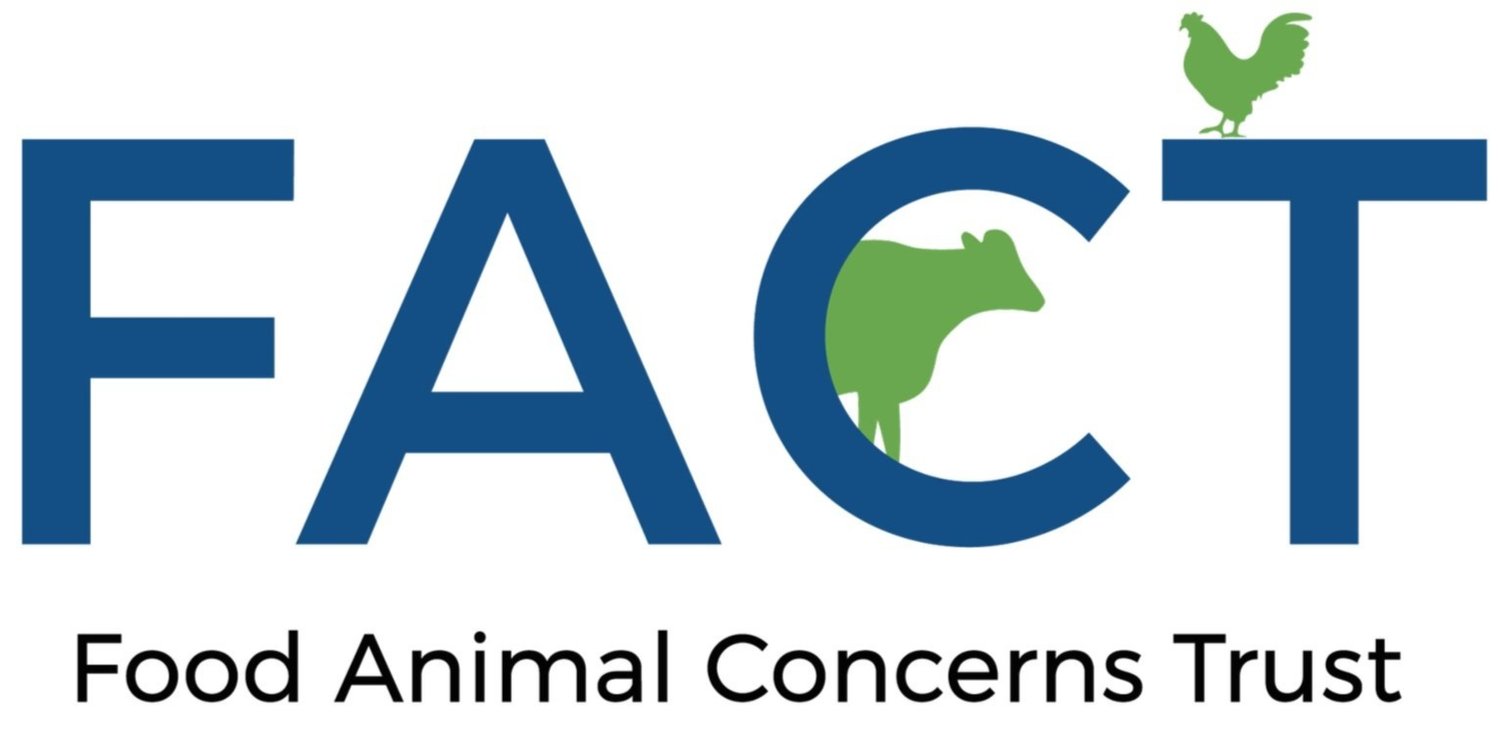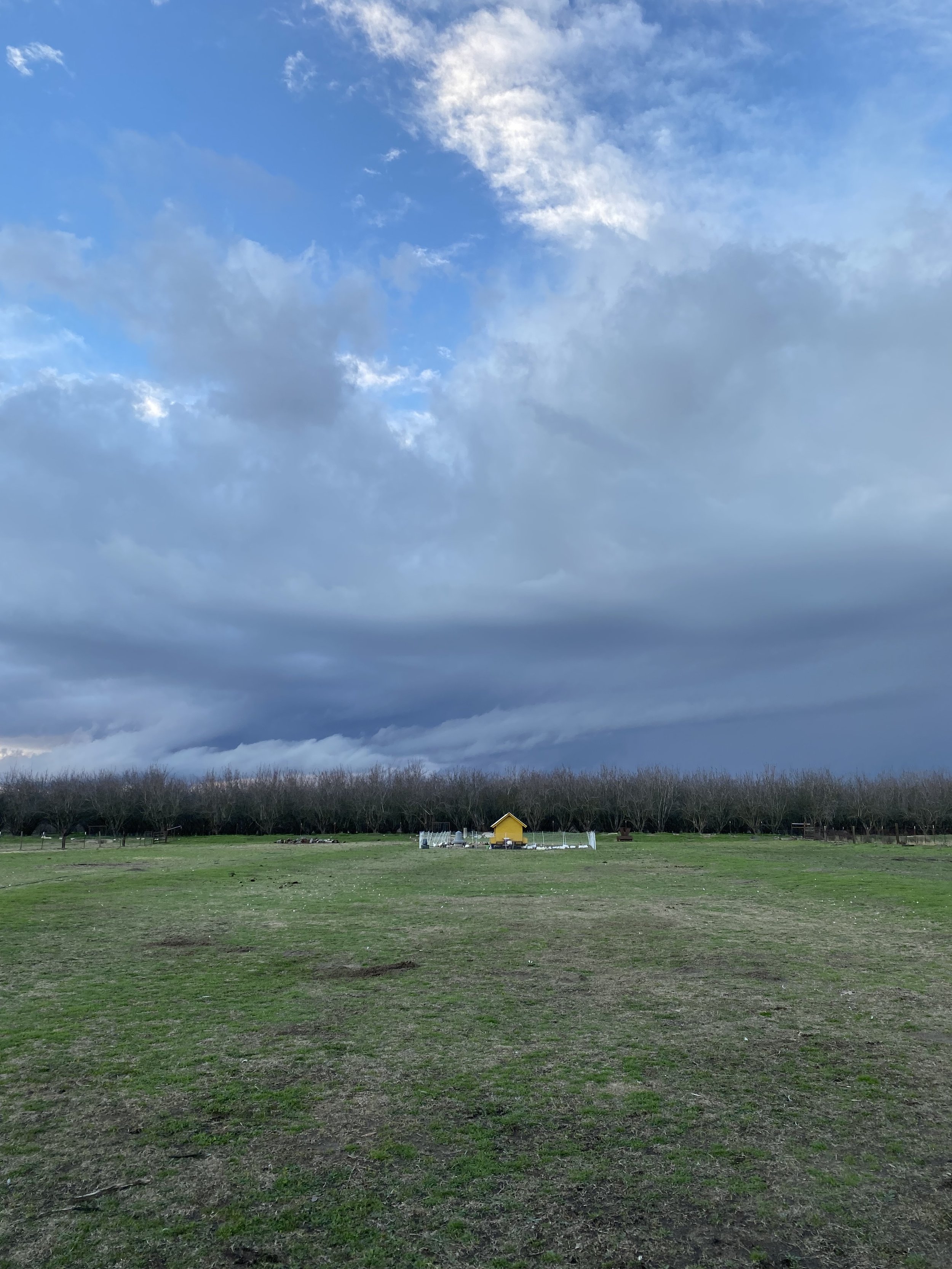A Wet Winter Day in the Life of a Humane Livestock Farmer
By Samantha Gasson, FACT’s Humane Farming Program Associate
FACT’s Humane Farming Team works with pasture-based livestock farmers all over the country. One of my favorite aspects of being part of this amazing team of two (soon to be a team of three) is seeing what farming looks like from coast to coast.
As part of our quarterly “A Day in the Life of a Humane Livestock Farmer” series we are going to visit a farm that has been dealing with a record drought for the last few years only to find themselves in the headlines once again for a completely different natural disaster. I’m, of course, referring to the record storms that hit CA from December through the middle of January causing flooding, mudslides, and general mayhem.
Turlock received more rain in Dec ‘22 and Jan ‘23 than in the previous 20 months combined….no exaggeration, I looked it up! What is so impressive how well Alexandria’s pastures have done under two, opposite ends of the spectrum, extreme weather situations. I hope 2023 brings evenly spaced, reasonable rainfall so Hen and Harvest can continue to build soil health, sequester carbon, and feed its community.
From Record Drought to Record Rain
How regenerative farming practices helped Hen and Harvest ride out this winter’s storms
By Alexandria Miranda
Here at Hen and Harvest Farm in Turlock, California, we focus on raising poultry, waterfowl, and livestock, utilizing regenerative farming practices such as intensive rotational grazing, cover cropping, and no-till systems on a little over five acres of pastureland. Being located in California's Central San Joaquin Valley has presented many challenges when it comes to water because our state has been in a drought for several years now. Each year we pay for access to irrigation water supplied by our local irrigation district to flood irrigate our pasture, ensuring we have forage for our animals to graze throughout the hot and dry summers. Without this water we wouldn’t be able to grow anything!
We’ve always been in a frame of mind to conserve water in these hard drought conditions, which we have mitigated by planting cover crops and not tilling, enabling our ground to retain as much moisture as possible in the soil. Also, by rotationally grazing our animals, we ensure our soil has enough time to rest and regrow between rotations, preventing any soil from being left bare which leads to erosion.
With the recent unprecedented amounts of rain we have received in California, it’s interesting that these same conservation practices have also helped prevent our farm from flooding. Our pasture’s diverse plant roots, combined with a healthy soil structure from our conservation practices, have enabled our soil to hold large amounts of water. Instead of having compacted ground from set stocked animals which floods and creates muddy messes, or annually tilled land where water just runs off in erosion, our pastures let water infiltrate, flowing down deep through plant’s roots and regenerating our water table!


